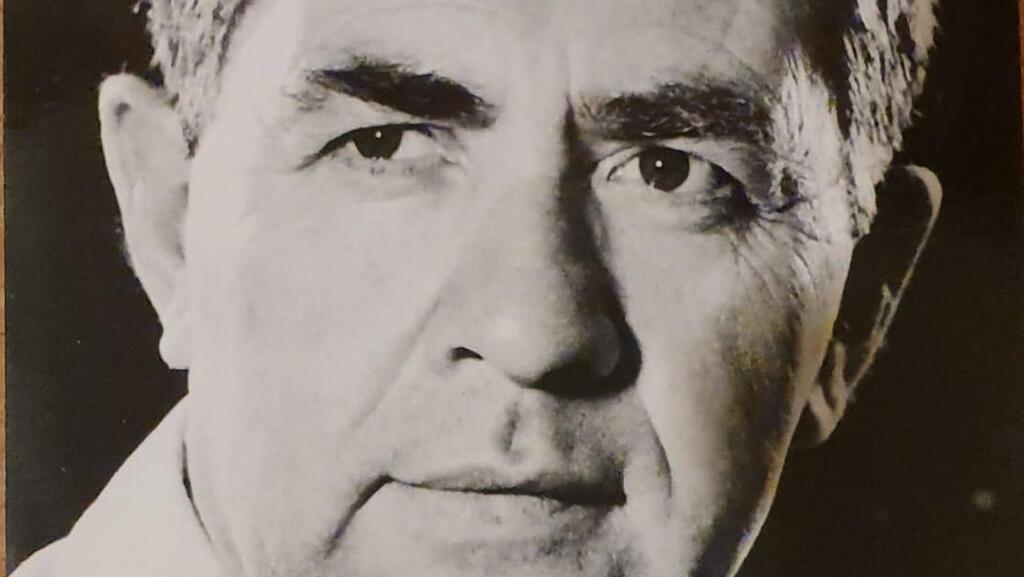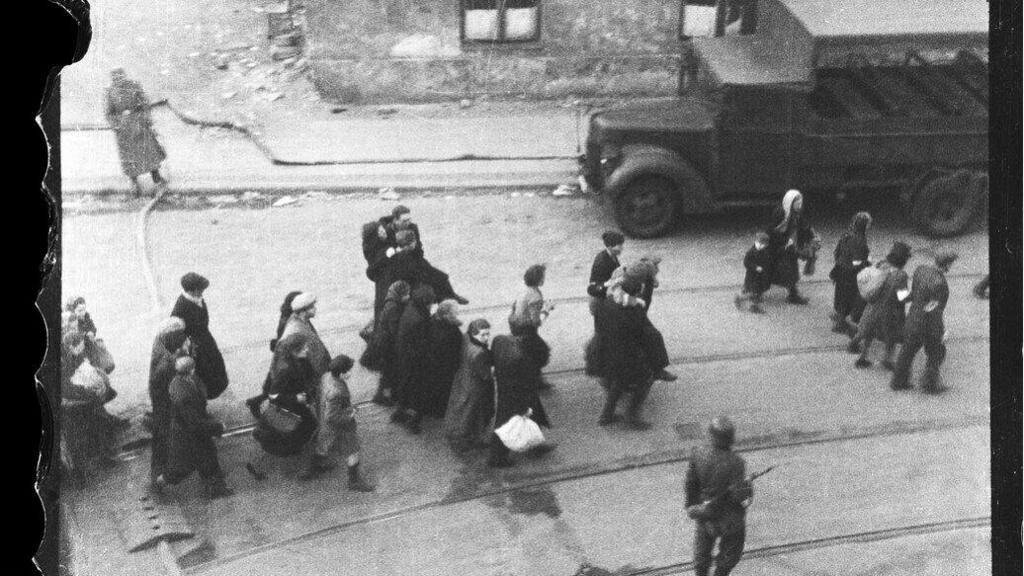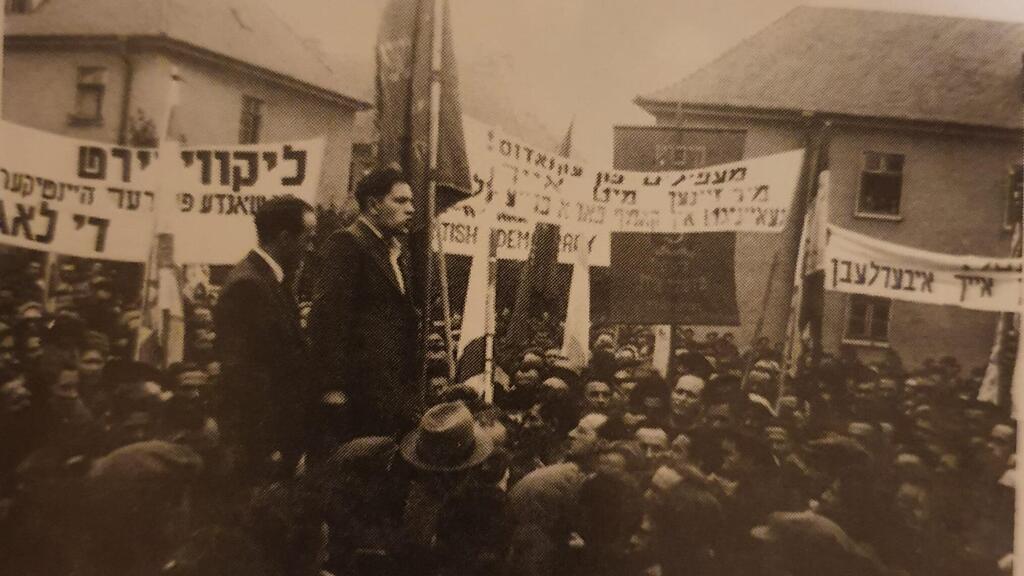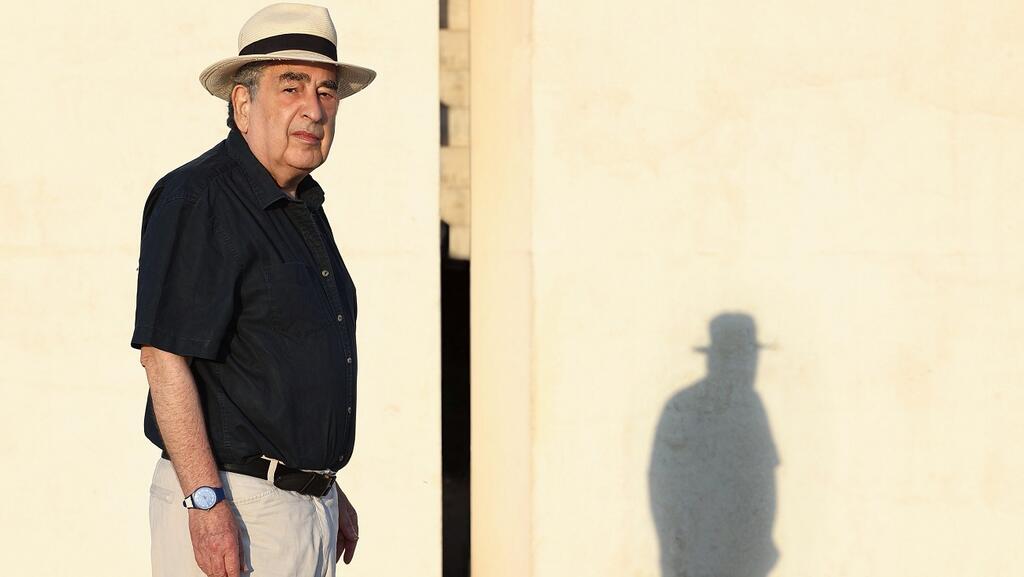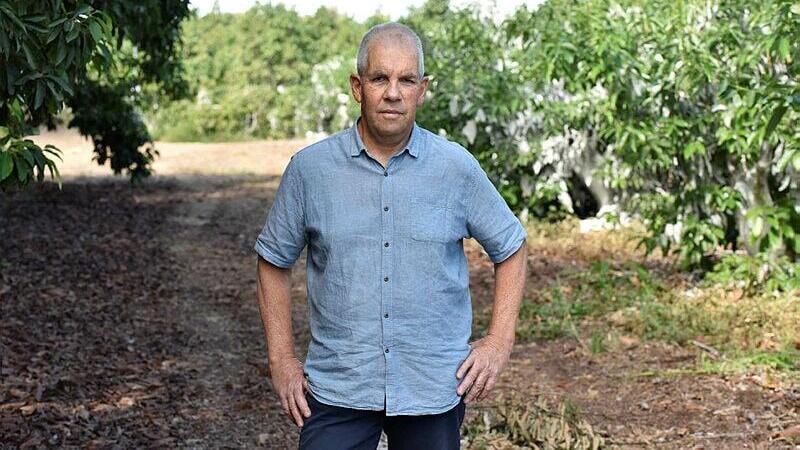The Warsaw Ghetto Uprising is an integral part of how we remember the Holocaust and the bravery employed in fighting it. It’s a symbol of Jewish resistance against the Nazis.
Other stories:
Less known, however, is the fact that the rebels in that ghetto in Poland were not the first: It was proceeded by the uprising in Nyasvizh) Nesvizh) led by a great Jew - Shalom Cholawski. Unlike Mordechai Anielewicz, who was murdered in Warsaw in 1943, Cholawski managed to escape, made Aliya, and become a farmer, teacher, and historian.
One of his sons, Yitzhak (Itzik) Cholawski has been serving as head of Megiddo Regional Council for many years. “My father would always say that the Jewish People have to look after themselves, that we can’t rely on the Gentiles. If we put our fate in their hands, no one will come to our aid” he tells us.
Shalom Cholawski was born in 1914 in the small village of Nyasvizh, Belarus. As a young man, he studied at the teachers’ training seminary in Vilna. At the outbreak of the Second World War, aged 25, he was drafted into the Polish army.
After Poland’s defeat, he returned to his village. Suddenly Operation Barbarossa was set in motion: Germany invaded parts of the Soviet Union and occupied some of its territory, including the village of Nyasvizh. Nyasvizh was a picturesque village, mainly thanks to Nyasvizh Castle, owned by the Radziwiłł family. The village numbered almost 9000 people, over half of whom were Jews.
On 30th October 1941, the Nazis murdered 4000 Jews. The 600 remaining Jews were concentrated in a ghetto. One such Jew was Shalom Cholawski. A month went by in the overcrowded ghetto. In December, young ghetto residents secretly gathered under the leadership of members of Hashomer Hatzair, led by Shalom Cholawski.
The youngsters created light weapons – knives, axes, and nailed clubs as they prepared combustive materials for setting fire to houses. They were assisted by two young women who worked in the German arms depot, who brought them bullets, hand grenades, and a dismantled machine gun.
A few short months later, on 17th July, the ghetto received the sad news that the Germans had murdered all of the Jews in the Jewish village of Haradzeya, some 14 km from Nyasvizh.
Cholawski wasted no time: He gathers his people and declares that they may well be the last surviving Jews on Polish soil or even in the whole of Europe. He divides his people into groups and lookout positions. Four days later, on July 21st, as the Germans encircle the ghetto to carry out the dreaded selection process, an armed Jewish revolt breaks out.
The valor of the young people was astonishing, but the ammunition quickly ran out and they pulled out their cold weapons and started setting fire to buildings. Cholawski’s father, Yitzhak and his three brothers were killed in the fighting. There were 40 dead Germans, but the ghetto was annihilated. Of the 4,600 original Jewish residents, 25 were left alive. They managed to escape and join the partisans in the nearby forest. Jewish Nyasvizh ceased to exist.
Shalom and his small band of friends acclimatized to the forest, but weren’t looking to rest among the trees and caves. They positioned themselves near central railway tracks, sabotaging German military trains. They sustained themselves by incursions into villages. Toward the end of the war, in 1944, Cholawski left the partisans and formed the “Partisans, Soldiers, Pioneers” organization.
After blood-soaked battles, the organization focused its efforts on setting up hostels for Jewish refugees awaiting Aliya to the Land of Israel, as well as fighting the British who were doing everything within their powers to stop Jews from moving to Israel.
“There’s a picture of my father addressing a demonstration about the Exodus ship that was turned away by the British” recalls, Shalom’s son Yitzhak.
This extensive activity, says Lior Inbar of the Ghetto Fighters' House archives, didn’t necessarily appeal to the Yishuv leadership in Israel: "There was an orderly leadership in Israel that sought to control the agenda, and the initiatives of 'nice young guys' in Europe didn’t always sit well with their plans."
In the three years between the end of the war and the establishment of the state, some rather mysterious events took place. Were it not for author Haim Be’er we would have no knowledge of these events. “I met Shalom in a rather interesting way,” Be’er tells Ynet. “It was following his eulogy for Yehoshua Cohen. Yehoshua Cohen had been in Lehi and had served as Ben Gurion’s bodyguard. Cholawski was from Hashomer Hatzair.
The two met and a deep friendship developed. At the time Be’er was writing a novel on the unorganized, private “Nazi avengers” and asked to consult with Cholawski.
The former partisan immediately launched into stories about how he, on an individual, completely personal operation, assassinated Nazi officers in the years after the war. On his mission of revenge, he followed senior Nazis who had remained in Lithuania, broke into their houses and strangled them with his bare hands.
How many Nazis are we talking about?
“At least two dozen. Shalom showed me items he had taken from the Nazis’ homes: a chess set with pieces made of Torah scroll handles, a purse made of leather that had been part of a Torah scroll. Ironically, it was none other than the Ki Tavo Torah portion – with the curses.”
“When I asked him why he halted his mission of revenge, Shalom told me that he wasn’t gleaning any feeling of satisfaction and didn’t see any purpose. Even a despicable dead Nazi lying at his feet, didn’t give him any pleasure. He chose to cease his activities. “
Be’er believes that Cholawski’s life constituted an ongoing search for purpose. He says: “The landmarks he aspired to reach ‘bored’ him at a certain point, each time moving on to the next thing. After his operations against the British, he became a farmer, which wasn’t enough for him. He then turned to research, becoming a leading Holocaust historian.”
In the early 1960s, Cholawski decided to devote his life to researching the Jewish fighting against the Nazis. He completed a Ph.D. at the Hebrew University and published ten books. As a leading scholar, he lectured all over the world and founded museums memorializing the Holocaust.
This specialization made him a kind of link in the controversies surrounding Israel-German relations on focal issues including the famed reparations agreement and arms sales to Germany. “My father used to say that he felt obligated to pass on this critical period in the life of the Jewish People to the next generation” recalls his son, Itzik.
What do you feel is your father’s greatest legacy?
“My father sought to ensure that the Jewish fighting against the Nazis is given its due place in history. He wanted to counter the ‘like lambs to the slaughter’ myth. He strove to convey a clear message about our ability to fight and struggle and to take care of ourselves. It’s important to raise awareness about the uprising against the Nazis that my father led and to incorporate it into our understanding of Jewish fighting.”
Shalom Cholawski died aged 96 in 2011. Inbar contends that “Sadly people forget. I always say that Auschwitz has defeated Warsaw. Holocaust remembrance over the past 20 years has focused on sites like Majdanek, Auschwitz and Treblinka, which are emotionally very powerful, but it takes a lot of imagination to understand that not so long ago there were active communities in places like Warsaw or the Chachmei Lublin Yeshiva. I’m not trying to be critical. These are natural processes. “
Haim Be’er provides further insight into Cholawski’s life: He believes the great researcher, became ‘fed up’ even with research. “Shalom told me that Holocaust research focuses on the Germans, on ‘what they did,’ but misses the loss of the Jewish People. If the Second World War hadn’t happened, just think about the cultural and intellectual contributions the Jewish People would have made, think of all the Nobel prizes. Cholawski believed acts of revenge served no purpose. They don’t bring back the dead. In Judaism, revenge is in the hands of God (‘May God avenge their blood’). He believed that we humans can only look forward, work forward, never look back.”


